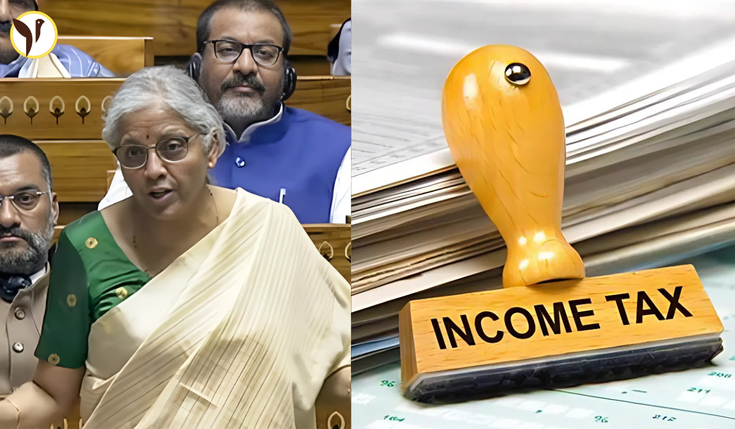The Union Budget for 2025 is expected to be presented on February 1, 2025, amid growing expectations from salaried individuals for income tax relief. With inflation on the rise and the cost of living continuing to increase, many are hoping for measures that will ease the financial burden on taxpayers. Economists are urging the government to consider tax cuts to stimulate savings and growth, which could also lead to increased demand in sectors that are struggling due to sluggish consumption.
Union Budget 2025 Expectations
As the Union Budget 2025 draws closer, the primary expectation is for some form of tax relief for salaried individuals. The ongoing rise in inflation has put a significant strain on household budgets, prompting calls for measures that can provide taxpayers with some relief. During discussions with Prime Minister Narendra Modi, experts highlighted several strategies to address India's economic challenges, one of the key recommendations being to reduce income tax rates.
The goal behind reducing tax rates is to increase disposable income, which would, in turn, encourage people to save more and spend on essentials, thereby giving a much-needed boost to demand in struggling sectors. Many are hopeful that the Finance Minister will take this step to help support economic recovery in 2025.
Modifications to the Tax Regimes in Recent Budgets
In the last Union Budget, there were no significant changes to the old tax regime. However, the government did introduce several modifications to the new tax regime to make it more appealing. One of the most notable changes was the widening of two income tax slabs, which allowed more people to benefit from lower tax rates. Additionally, the standard deduction for taxpayers under the new regime was increased from Rs 50,000 to Rs 75,000.
For context, the standard deduction is a fixed amount subtracted from an individual’s taxable salary income. It is meant to help employees cover common work-related expenses, such as travel or office supplies. India initially abolished the standard deduction in 2005, but it was reinstated in Budget 2018 at Rs 40,000. It was later increased to Rs 50,000 in the interim Budget of 2019 and expanded further in the 2023 Budget.
In 2023, the standard deduction was made available to individual taxpayers in the new tax regime for the first time, allowing them to claim Rs 50,000. Family pensioners could also claim a deduction of up to Rs 15,000. This change was welcomed by salaried individuals, especially those earning more than Rs 15.5 lakh annually, who saw a tax benefit of Rs 52,500.
The Last Major Income Tax Relief
Looking back, the last significant income tax relief was provided in the Union Budget for the financial year 2020-21. This Budget introduced a new, optional personal income tax regime that offered lower tax rates but came with the condition that taxpayers would have to forgo several common exemptions and deductions, such as those under Sections 80C and 80D.
Ajinkya Gunjan Mishra, a tax partner at S&R Associates, explained that the introduction of this optional tax regime was aimed at simplifying the tax system and providing relief to middle-income earners who might not be claiming deductions. By offering lower tax rates, this regime particularly benefited those in the middle-income group who did not make use of exemptions. Mishra pointed out that India’s income tax system is moderate compared to global standards. For example, India’s basic exemption limit of Rs 3.5 lakh is lower than Singapore’s equivalent of Rs 6-7 lakh, but it is higher than the exemption limits in several European countries.
Another significant change occurred in the Finance Act 2024, which provided additional relief for taxpayers. Dipesh Jain, a partner at Economic Laws Practice, noted that the basic tax-free income slab limits were expanded, tax rates were reduced at specific income levels, and the standard deduction was increased from Rs 50,000 to Rs 75,000. Another notable change was the reduction of the long-term capital gains tax rate from 20% to 12.5%. However, Jain cautioned that the removal of the indexation clause in some cases could increase the tax burden.
These changes have had a positive impact on disposable income and consumer spending. The simplified options under the new tax regime have helped increase liquidity for middle-class taxpayers, boosting their purchasing power and allowing them to spend more on goods and services.
Global Comparison of Tax Rates
When it comes to tax rates, India’s top marginal tax rate under the new regime is 39%, which aligns closely with global averages. For instance, the UK imposes a top tax rate of 45%, while the US has a top rate of up to 37%. Many other developed countries like Australia, Germany, and Japan have similar tax rates of around 45%.
Experts like Dipesh Jain have suggested that in order to further boost the economy and increase purchasing power, the government could consider rationalizing the effective tax rates. A more efficient tax structure would benefit not only taxpayers but also contribute to a stronger economy in the long term.
Conclusion: What’s Next for Union Budget 2025?
With Budget 2025 fast approaching, taxpayers are eagerly awaiting announcements that could ease the financial pressure they’ve been facing in recent years. Income tax relief, especially for salaried individuals, remains a primary expectation. As inflation continues to erode purchasing power, a well-designed tax policy could play a crucial role in helping to revive economic growth and stimulate consumer spending.






